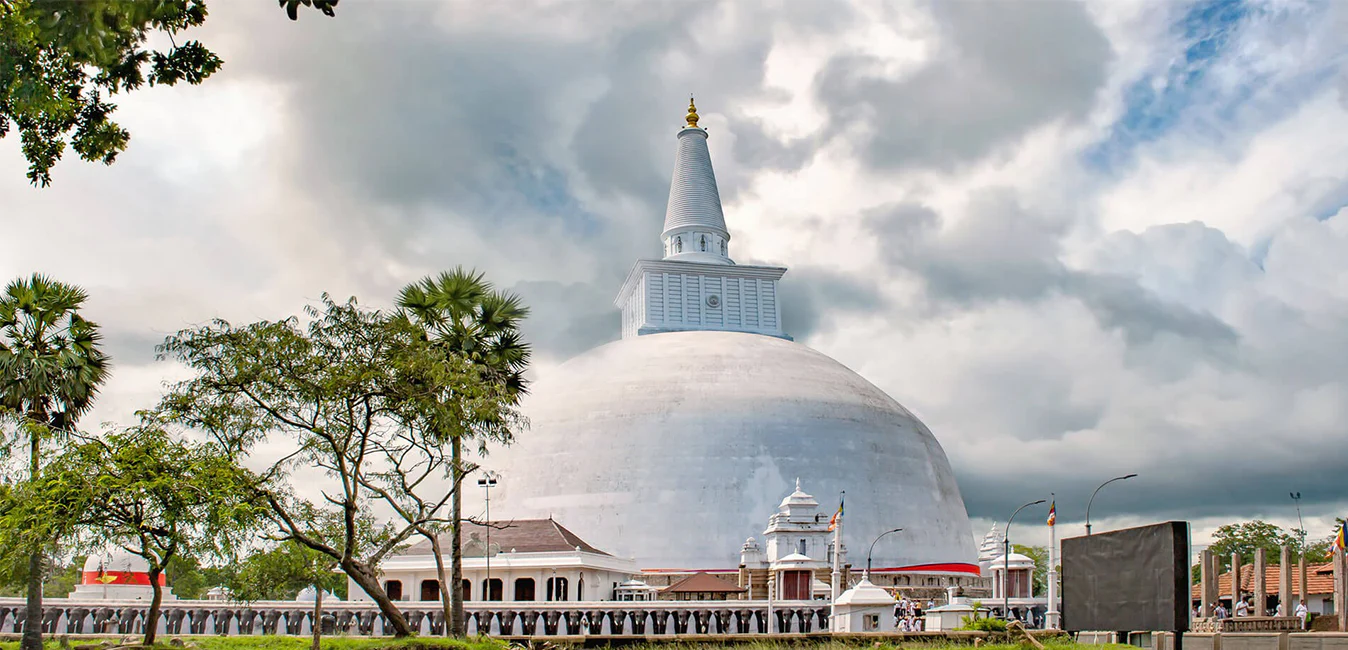
Anuradhapura City
Anuradhapura is belongs to the North Central Province in to Sri Lanka. Anuradhapura is one of the ancient capitals of Sri Lanka, famous for its well-preserved ruins of ancient Lankan civilization. The city, now a UNESCO World Heritage Site, lies 205 km north of the current capital Colombo in Sri Lanka.
Anuradhapura
Anuradhapura to miasto w dystrykcie Anuradhapura w północno-środkowej prowincji Sri Lanka. To święte miasto powstało wokół wycięcia z „drzewa oświecenia”, drzewa figowego Buddy, przywiezionego tam w III wieku p.n.e. przez Sanghamitta, założyciela zakonu buddyjskich zakonnic. Anuradhapura, polityczna i religijna stolica Cejlońska, która kwitła przez 1300 lat, została opuszczona po inwazji w 993 roku. Ukryty w gęstej dżungli przez wiele lat, wspaniały teren, z pałacami, klasztorami i zabytkami, jest teraz ponownie dostępny.
O dystrykcie Anuradhapura
Anuradhapura należy do północno-środkowej prowincji na Sri Lance. Anuradhapura to jedna ze starożytnych stolic Sri Lanki, słynie z dobrze zachowanych ruin starożytnej cywilizacji Lanki. Miasto, obecnie wpisane na Listę Światowego Dziedzictwa UNESCO, leży 205 km na północ od obecnej stolicy Kolombo na Sri Lance.
W świętym mieście Anuradhapura iw pobliżu znajduje się duża liczba ruin. Ruiny składają się z trzech klas budynków, dagobów, budynków klasztornych i pokuna (stawy). Miasto posiadało jedne z najbardziej złożonych systemów nawadniających starożytnego świata, położony w suchej strefie kraju administracja zbudowała wiele czołgów do nawadniania ziemi. Większość cywilów to syngaleski, podczas gdy Tamilowie i Maurowie ze Sri Lanki mieszkają w dzielnicy.
Specjalne miejsca w Anuradhapurze:
About Anuradhapura District
Anuradhapura is belongs to the North Central Province in to Sri Lanka. Anuradhapura is one of the ancient capitals of Sri Lanka, famous for its well-preserved ruins of ancient Lankan civilization. The city, now a UNESCO World Heritage Site, lies 205 km north of the current capital Colombo in Sri Lanka.
In the sacred city of Anuradhapura and in the vicinity are a large number of ruins. The ruins consist of three classes of buildings, dagobas, monastic buildings, and pokuna (ponds). The city had some of the most complex irrigation systems of the ancient world, situated in the dry zone of the country the administration built many tanks to irrigate the land. Most of the civilians are Sinhala, while Tamils and Sri Lankan Moors live in the district.
About North Central Province
North Central Province which is the largest province in the country covered 16% of total country's land area. North Central Province consist two districts called Polonnaruwa and Anuradhapure. Anuradhapura is the largest district in Sri Lanka. Its area is 7,128 km².
North Central Province has numerous potentials for Investors to start their Businesses, especially Agriculture, agro based industries and Livestock sectors. More than 65% of North Central Province's people depend on basic Agriculture and agro base industries. NCP also called "Wew Bendi Rajje" because there are more than 3,000 medium and large scale tanks situated in the province. Sri maha bodiya, Ruwanweli seya, Thuparama dageba, Abayagiri Monastry, Polonnaruwa Rankot wehera, Lankathilake are scared











